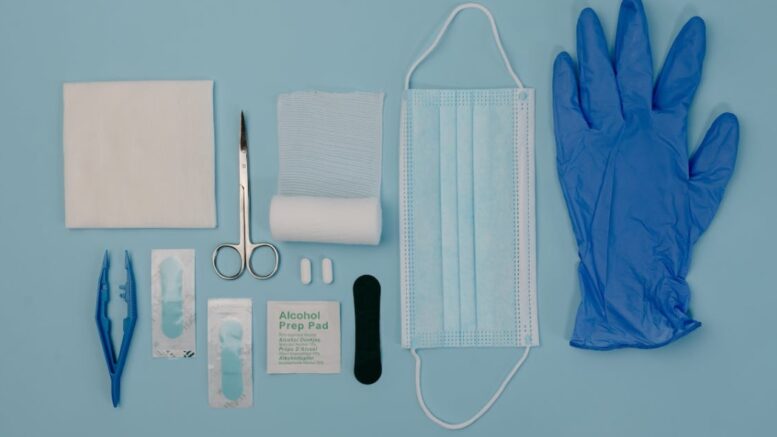Emergencies may occur at any given moment and in any location. Regardless of whether it is a minor injury or a life-threatening circumstance, having a well-equipped first aid kit can prove to be crucial. First aid kits are indispensable in emergency situations as they provide the necessary tools and supplies to provide immediate care prior to the arrival of professional medical assistance.
This article aims to examine the key components of a first aid kit, the significance of a prompt response as well as teach you some rudimentary first aid techniques that can be administered. You can also click here and take a look if you want to buy a first aid kit yourself.
Why First Aid Kits are Essential in Emergency Situations
First aid kits are essential in emergency situations for several reasons. In emergency situations, time is of the essence, and having a well-stocked first aid kit can make a significant difference in saving lives or preventing further harm. These kits allow individuals to provide immediate care and support to themselves or others in times of need. They contain items that can help manage bleeding, prevent infection and alleviate pain or discomfort.
Moreover, first aid kits promote safety and preparedness. By having a readily available kit, individuals are encouraged to take proactive measures to address potential risks and hazards. This can include being prepared for accidents, injuries or sudden illnesses that may occur at home, in the workplace or during outdoor activities.
On top of that, first aid kits can be customized to cater to specific needs or situations. For example, kits for outdoor activities may include items like insect repellent, sunscreen, or emergency blankets, while workplace kits may have additional supplies for addressing burns or chemical exposures. It is safe to say that having a well-equipped first aid kit can make a significant difference in effectively managing emergencies and potentially saving lives.
Key components of a first aid kit
While the contents of a first aid kit may vary, some of the components typically include:
- Adhesive bandages: Various sizes of adhesive bandages to cover small cuts, scrapes, and blisters.
- Sterile gauze pads: Used for covering larger wounds or as a dressing for bleeding injuries.
- Adhesive tape: Used to keep bandages and dressings in place.
- Antiseptic wipes or solution: Used to clean wounds and prevent infection.
- Tweezers: Used to remove splinters or foreign objects from the skin.
- Scissors: Used for cutting tape, clothing, or bandages.
- Disposable gloves: To protect both the first aider and the injured person from potential contamination.
- Pain relievers: OTC pain medications like ibuprofen or acetaminophen.
- Antihistamines: For preventing allergic reactions and treating insect bites.
It would also be wise to include important phone numbers such as emergency services, doctors and family members. It’s also important to regularly check and replenish your first aid kit to ensure that all items are in good condition and not expired. You can also consider including any specific items that may be relevant to your personal needs or activities such as specific medications, insect repellent or sunscreen.
Understanding the Importance of Quick Response
In emergency medical situations, the importance of a quick response cannot be overstated. Time is of the essence when it comes to saving lives and minimizing the impact of injuries or illnesses. In critical situations such as cardiac arrest, stroke or severe trauma, every second counts. Immediate medical intervention can make a significant difference in the outcome. Quick response times increase the chances of successful resuscitation, stabilization, and recovery.
Prompt medical attention can help prevent complications or worsening of the condition. For example, in cases of severe bleeding, rapid response and proper first aid can help control bleeding and prevent excessive blood loss, which can lead to shock or organ damage. Certain medical conditions such as strokes or heart attacks require immediate treatment to minimize long-term effects so the sooner medical professionals can intervene, the better the chances of preventing permanent disabilities or complications.
Administering Basic First Aid Techniques
Basic first aid techniques can be administered by anyone – regardless of their medical training. These techniques are designed to provide immediate care and stabilize the injured person until professional help arrives. Some basic first-aid techniques include:
- CPR (Cardiopulmonary Resuscitation): CPR is a life-saving technique uses chest compressions and rescue breaths to revive individuals who have stopped breathing or have no pulse.
- Control Bleeding: Apply direct pressure to the wound utilizing a sterile cloth or bandage. Elevate the injured area if possible to reduce blood flow.
- Splint Fractures: Immobilize the injured area by creating a splint using a rigid material such as a board or rolled-up newspaper. Secure the splint with bandages or cloth.
Remember, these techniques are meant to provide immediate care and should not replace professional medical help. It is important to call emergency services as soon as possible in serious or life-threatening situations.
